G20 Summit: The secret moves that prove US-China trade war is raging
A month after his tough ban on telco Huawei, Donald Trump has made an unexpected move as he agreed to a trade war ceasefire with China.
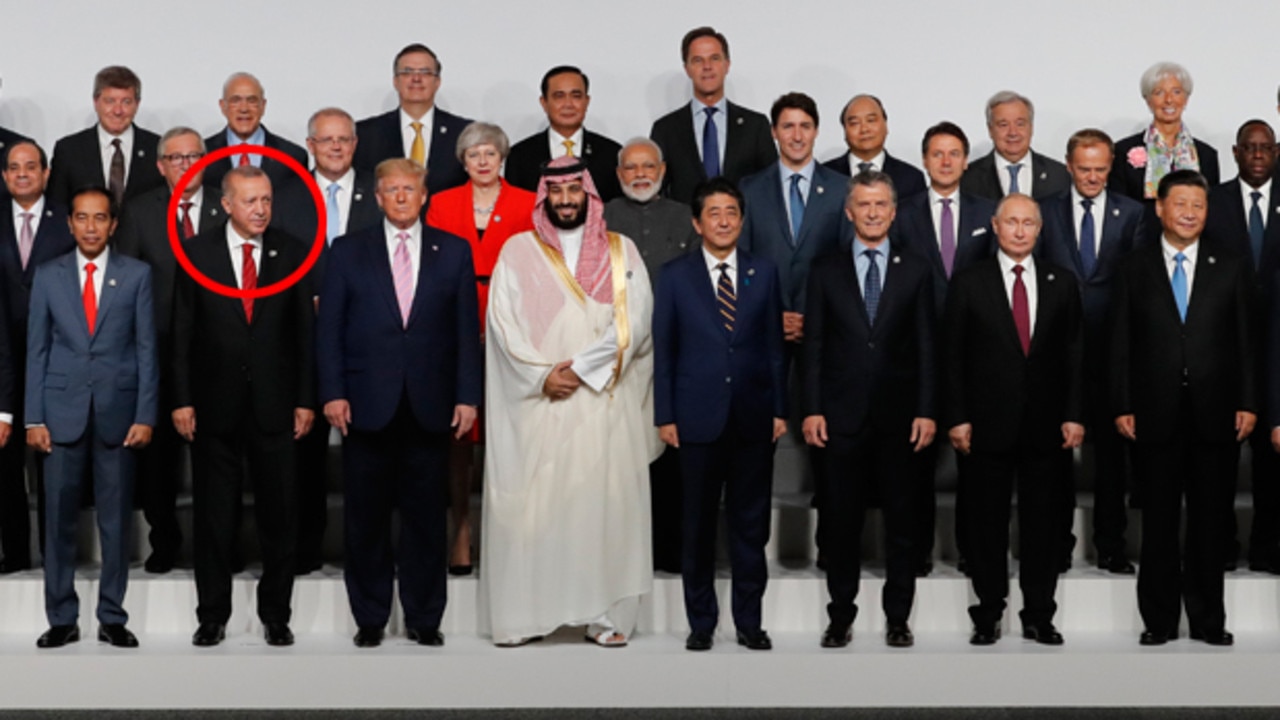
US President Donald Trump has agreed to allow American firms to sell technology to telco giant Huawei, indicating a potentially softer position on a key sticking point in the US-China trade war.
“US companies can sell their equipment to Huawei,” Mr Trump told reporters in Osaka, hours after sealing a tariff truce with Chinese President Xi Jinping.
“We’re talking about equipment where there’s no great national security problem with it.”
It was not immediately clear whether Mr Trump’s comment marked a material change in the stance toward Huawei, which has essentially been barred on national security grounds from accessing crucial American technology or operating in the US market.
The US fears that systems built by Huawei — the world leader in telecom network equipment and number two smartphone supplier — could be used by China’s government for espionage via built-in secret security “back doors”.
Huawei vigorously denies that and says the US has never provided proof to substantiate it.
Last month the US government added Huawei to an “entity list” of companies barred from receiving US-made components without permission from Washington.
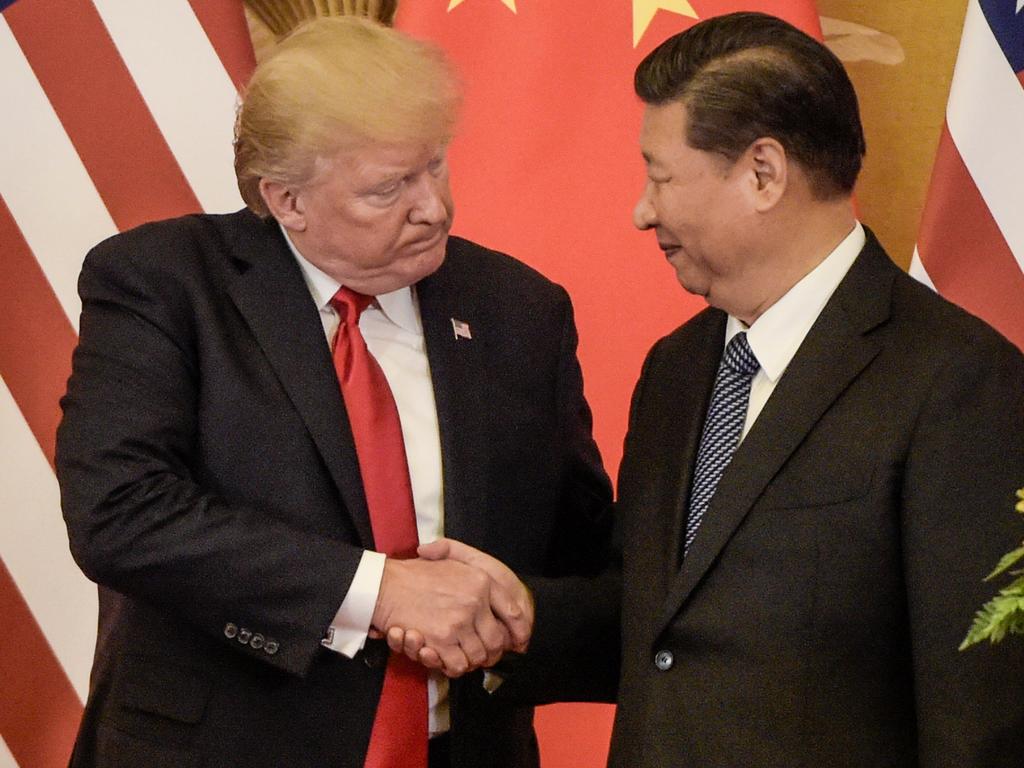
Mr Trump’s comment on its face does not mark a change from current practice. But it could be read by financial markets as a positive signal that his administration may be open to negotiating on Huawei when bilateral trade talks resume.
His comments come as he declared relations with China were “right back on track” after he and President Xi Jinping sought Saturday to de-escalate a prolonged trade war between the economic powerhouses despite doubts about either’s willingness to compromise on a long-term solution.
Xinhua, the Chinese state-run news agency, said the leaders had agreed to a new ceasefire in a year-long trade war, adding that stalled trade talks would resume and the US would hold off on threatened additional tariffs on Chinese goods.
The apparent truce marks a pattern for talks between Trump and Xi, who have professed their friendship with each other and hit the pause button on protectionist measures after their conversations, only to see negotiations later break down over the contentious details.
RELATED: The moment that summed up G20 chaos
RELATED: Icy handshake after ‘despicable act’
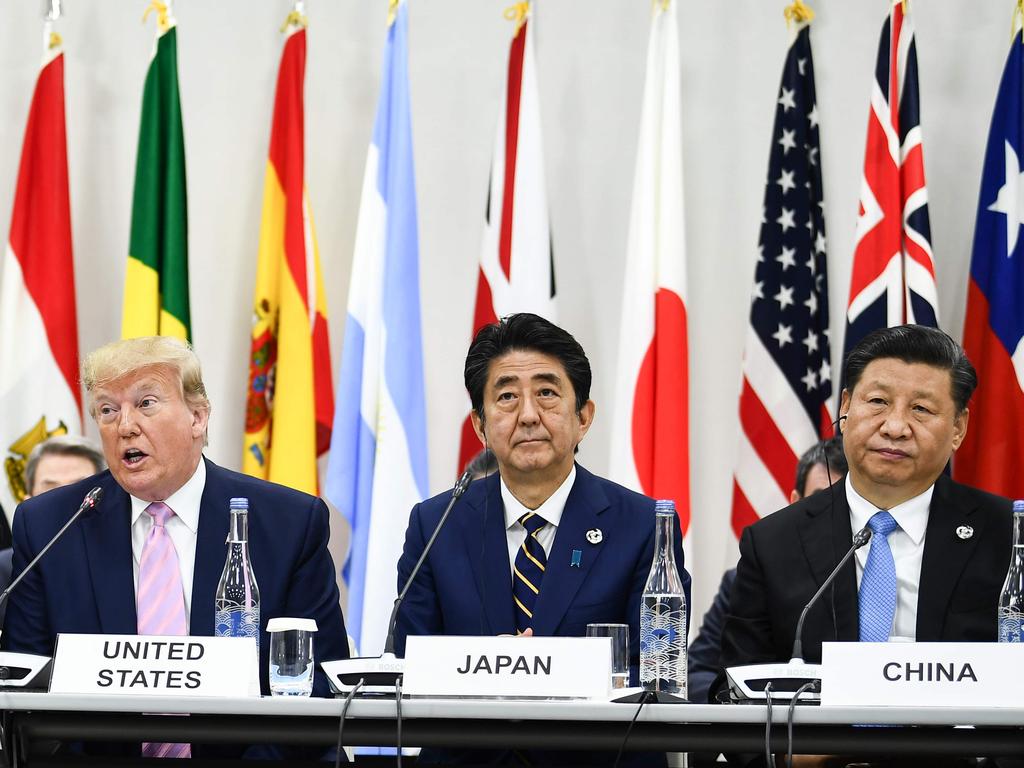
The annual G20 summit is underway in the Japanese city of Osaka, with the world’s leaders gathering to discuss everything from security and terrorism, to economic growth and climate change.
But one of the most important meetings will occur on the sidelines of this year’s two-day summit, between US President Donald Trump and China’s Xi Jinping over their long-running trade war.
The two leaders — who will meet late on Saturday afternoon (AEST) — have been locked in a vicious back-and-forth over trade for months, involving negotiations and break downs at every turn.
The two countries have imposed tariffs on more than $512 billion worth of goods.
But the strategic moves organisers are being forced to make behind the scenes paints a very clear picture of how tense the trade war has become.
‘NEGATIVE TONES’
At a G20 working lunch, held behind closed doors on Friday, President Trump and President Jinping were separated by Japan’s Prime Minister Shinzo Abe — fuelling rumours that the two men were at serious odds with one another.
An unnamed White House official told Al Jazeera that the tension was clear in the room.
“The tone was largely positive from the various world leaders and China was less positive,” the official said.
“Just a more negative tone (from China).”
The US President appeared more hopeful ahead of the high stakes meeting for a productive resolution to the trade war, telling reporters on Friday, “we will see what happens and what comes out of it”.
“It’ll be a very exciting day, I’m sure. It’s going to come out hopefully well for both countries,” Trump said.
President Trump: "We are going to have a meeting with President Xi of China tomorrow, as you probably have heard. It seems to be a rumor about that and that. We are indeed. And we look forward to it." #G20 pic.twitter.com/eCpIzgQws3
— The Hill (@thehill) June 28, 2019
STRATEGIC MANOEUVRES
The tense lunch meeting came after the G20’s traditional “family photo” session, where the summit participants gather for a leader’s portrait — to depict a sense of global harmony to the rest of the world.
But what reportedly happened behind the scenes of this photo shoot proved yet again the deep discord running between the US and Chinese leaders.
A last-minute logistic manoeuvre saw Turkish President, Recep Tayyip Erdogan, standing to the right of President Trump.
President Erdogan was allegedly asked to switch places with President Xi Jinping, so the feuding leaders didn’t have to stand beside one another.
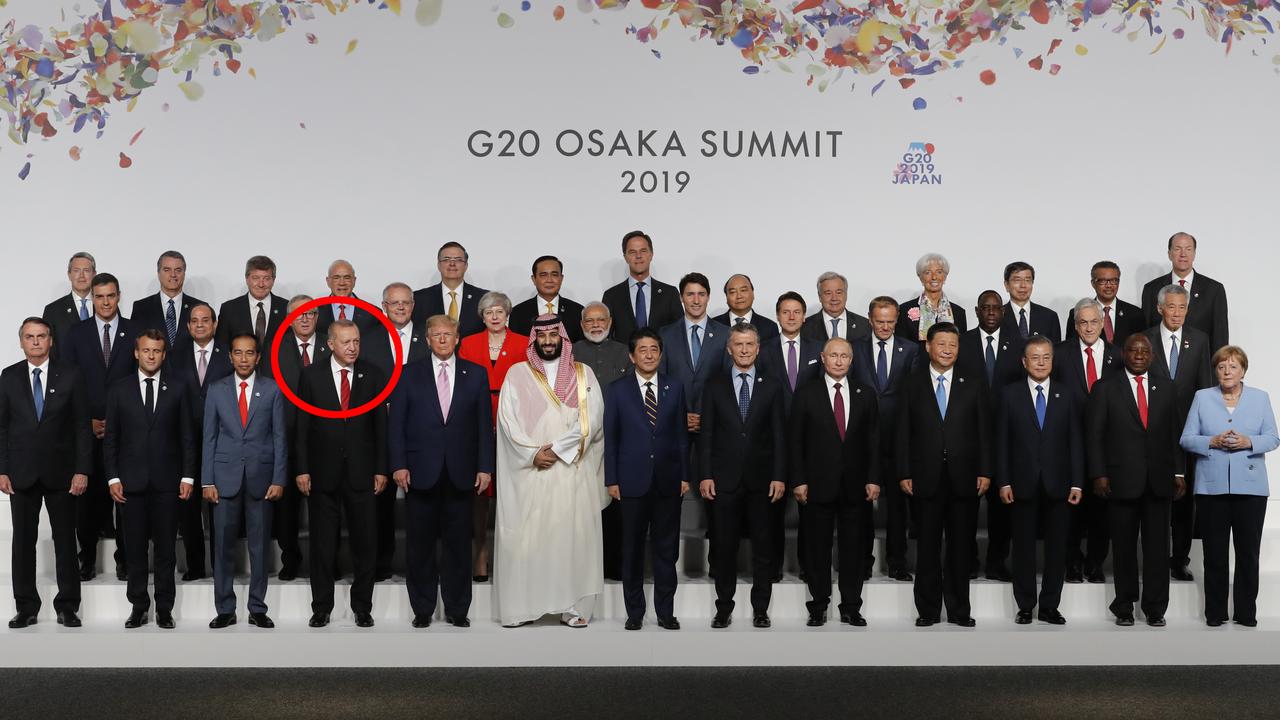
The two leaders are expected to discuss their trade relationship on Saturday afternoon, in an attempt to loosen the restrictions placed upon each other in recent months.
US and Chinese trade teams met on Friday, ahead of Saturday’s meeting, to discuss resolution options.
These could include a trade truce, a tariff suspension on either or both sides, or even a host of new tariffs imposed by one or both leaders, if discussions break down.
President Xi Jinping called for “co-operation and dialogue” ahead of his meeting with President Trump.
On Saturday, the US President’s response was that he was open to making a “historic deal” with the Chinese.
“It would be historic if we could do a fair trade deal,” Trump said.
“We are totally open to it,” he added.
A report by CNN claimed the trade teams included US Trade Representative Robert Lighthizer, US Treasury Secretary Steven Mnuchin, and Chinese Vice Premier Liu He.
Mr Mnuchin said he hoped the President will return home with a deal, but there needed to be “the right efforts in place.”
“We were about 90 per cent of the way there, I think there’s a path to complete this, but we’ll see where we get,” he said.
Great to be back in Japan for the #G20OsakaSummitpic.twitter.com/ZUwla1UMAQ
— Donald J. Trump (@realDonaldTrump) June 28, 2019
TRUMP’S SCHEDULE
Trump has had eight one-on-one meetings planned during the G20, including President Xi Jinping and Russian President Vladimir Putin.
Upon his arrival in Osaka, Mr Trump delivered a strong warning to his adversaries.
“We are going to be meeting with a lot of different countries, many of whom have been taking advantage of the United States, but not so much anymore, and soon not at all anymore,” Mr Trump said.
He also tweeted this morning, announcing that, following “some very important meetings, including my meeting with President Xi of China”, he would depart Japan for South Korea.
After some very important meetings, including my meeting with President Xi of China, I will be leaving Japan for South Korea (with President Moon). While there, if Chairman Kim of North Korea sees this, I would meet him at the Border/DMZ just to shake his hand and say Hello(?)!
— Donald J. Trump (@realDonaldTrump) June 28, 2019
THE US-CHINA TRADE WAR
Relations between two the major countries appeared relatively stable early this year, despite a tariff Trump had imposed on Chinese trade.
The US President launched his assault on China as a way to rewrite the existing trade deals between the two countries — which he claimed unfairly benefited Beijing and “stole jobs” from Americans.
But rather than a swift, diplomatic resolution to the first tariff issue, what followed was a series of tit-for-tat tariffs imposed by both countries, before negotiations completely disintegrated in May.

Now, months later, Trump continues to raise tariffs on China’s existing trade partnerships, but his brash decision could prove catastrophic for American business as well as other economies around the world.
He recently threatened a crippling 25 per cent tariff on an additional $300 billion worth of Chinese made goods.
With the trade war in full swing, and tensions between the two nations higher than ever before, Trump said he hoped for “productive” talks with the Chinese President to put an end to the saga.
But during a rally in May, Trump announced: “I’ve increased the tariffs on China again”.
“And we won’t back down until China stops cheating our workers and stealing our jobs,” he said.
“Otherwise we can make the products right here if we have to.”

THE IMPACT OF THE TRADE WAR
Trade tensions have increased so much that a report by CNN revealed China had threatened to blacklist US companies from conducting business with them.
The ‘unreliable entity list’ would include foreign companies, individuals and organisations, according to a statement from the Commerce Ministry of China, released in May.
Trump responded by hiking tariffs yet again, which saw US exports to China plummet and hundreds of workers laid off.
There are currently seven million Americans who rely on the US-China trade agreement for their income.

The two administrations have gone back and forth over their trade deals ever since, with Trump recently accusing Xi Jinping of breaking a deal they had allegedly made.
“You see the tariffs we’re doing?” he asked his supporters during a rally.
“It’s because they broke the deal!”
“They broke the deal, they can’t do that, so they’ll be paying.”
In an interview from Osaka, ABC National Affairs Correspondent Greg Jennett said it would be “folly to expect that one meeting alone at the G20 is going to resolve this”.
“Any expectation that it will be fully resolved with one handshake would be unlikely, given the pressure building remarks delivered beforehand,” Mr Jennett said.
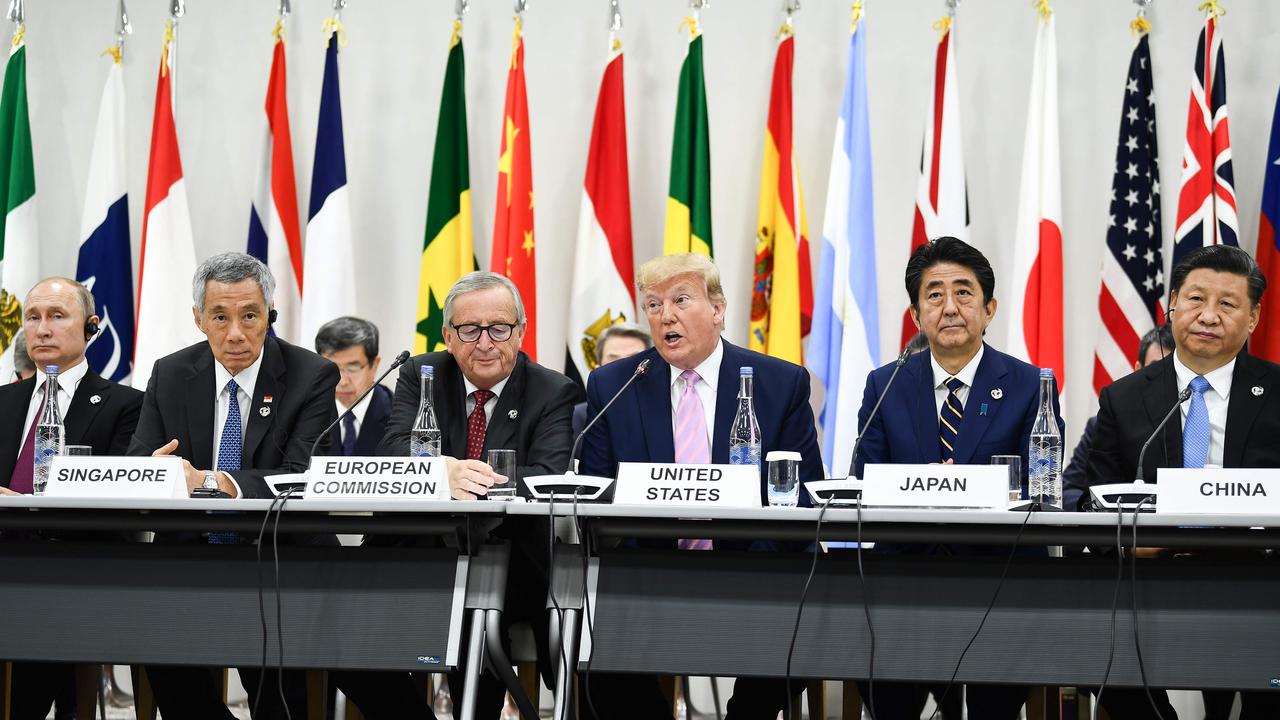
AUSTRALIA’S STAKE IN THE GAME
Australia finds itself in a tricky position in this trade war, wedged between two allies that provide the nation with strong trade as well as security.
Historically, Australia has a unique bilateral partnership with the US, which centres on security and defence, as well as intelligence and a free-trade agreement.
China is also Australia’s largest trading partner, according to the Lowy Institute, while Australia is a leading source of resources for China.
Prime Minister Scott Morrison has spent the last two days treading a fine line between the two warring parties, attempting to carve out some economic space for Australia, and impressing upon both Presidents the need for a resolution.
Another item on Mr Morrison’s agenda at the G20 is to get close to cementing a European Union trade deal by the end of the year, which he briefly hinted at on Saturday.

Mr Morrison dined with President Trump on Thursday evening — He even managed to extend an invitation to The President’s Cup golf tournament in Melbourne, which Trump accepted.
While the Prime Minister intends to highlight the importance of ending the trade wars during his visit, he also said it would be “unrealistic to expect a resolution” from Saturday’s meeting.
After meeting with both US and Chinese presidents, Mr Morrison said he could sense a determination by both parties to resolve it.
“But I’m not naive about the difficulties of that occurring,” he said on Friday.
“The fact that they’re engaging is positive, but I’m simply aware that there are very real, substantial and difficult issues to be resolved.”
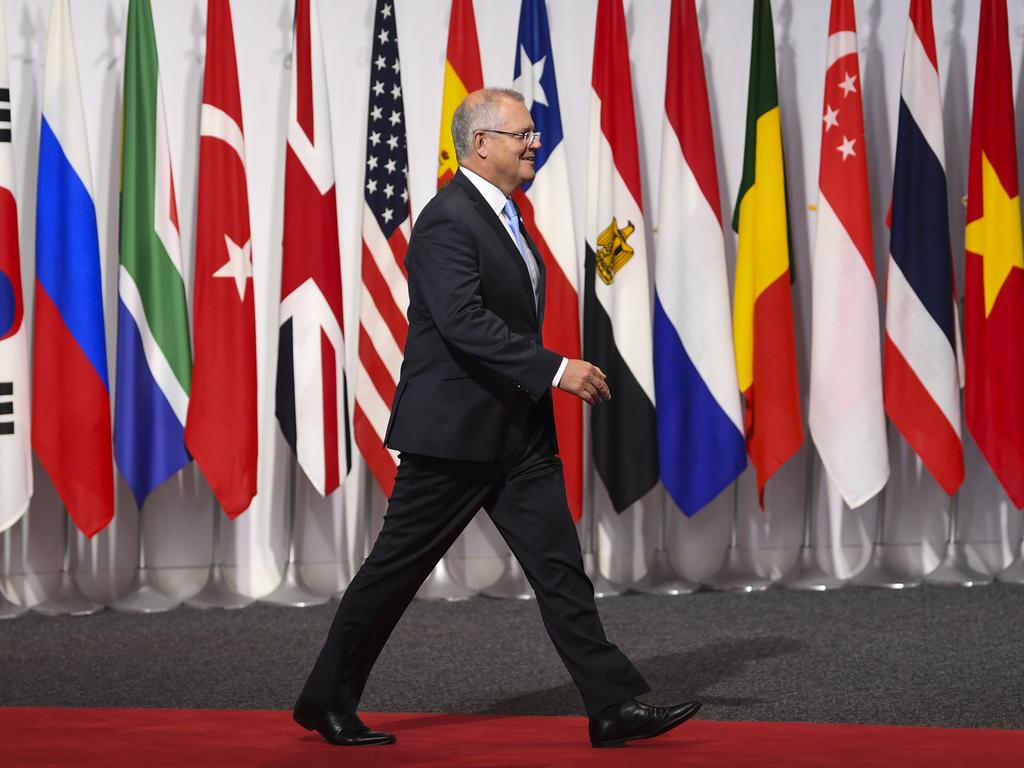
He also said Australia wasn’t the only country suffering as a result of the two leaders’ disagreement.
“The comment isn’t made as a criticism, it’s just made as candid observation,” he said.
“And I’m not the only one making it who’s here.”
THE FIRST G20
The first G20 summit was held in Berlin in 1999, as members gathered to discuss the financial crisis in East Asia.
Following the global financial crisis of 2008 — when banks collapsed and unemployment soared across major economies — the summit transformed into an emergency council of sorts for world leaders.
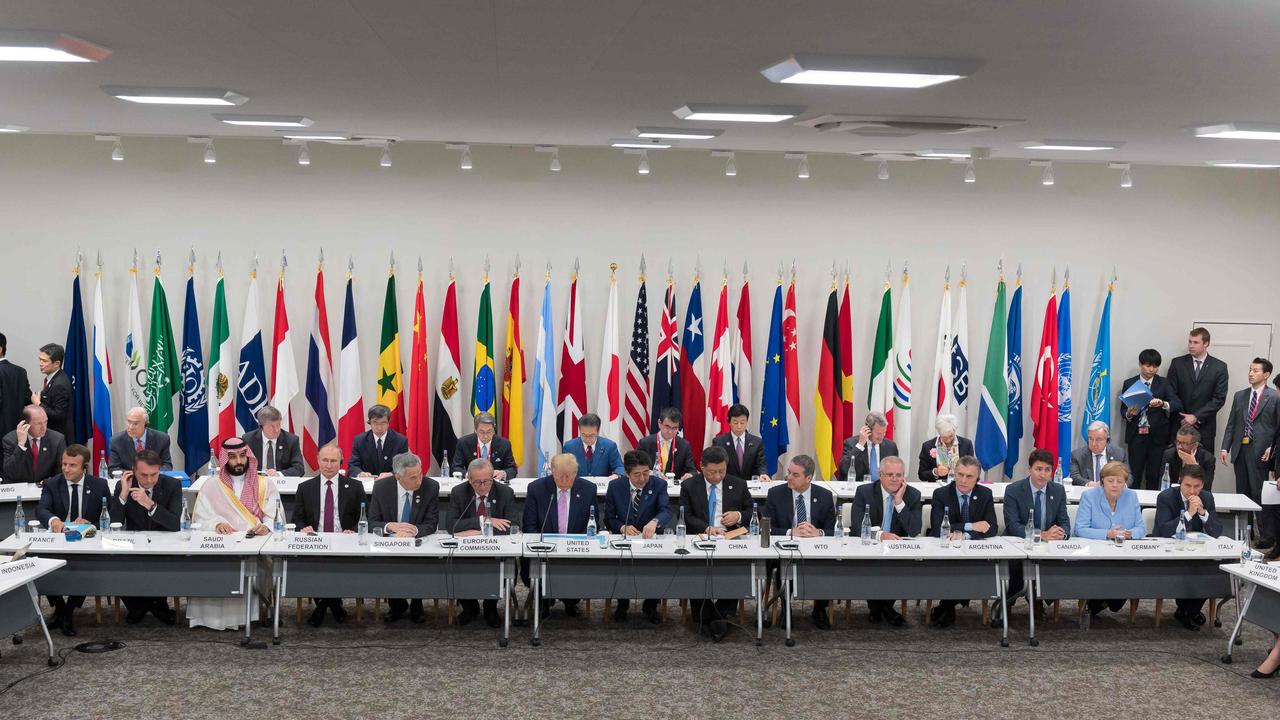
The summit is hosted in a different country each year — Australia hosted it in Brisbane, in 2014 — and leaders from around the world gather to discuss issues of global importance.
Side talks also take place, between both allies and adversaries, with this year’s discussions between US President Trump and Chinese President Xi Jinping taking centre stage.
Continue the conversation @Rhi_lani or email rhian.deutrom@news.com.au



